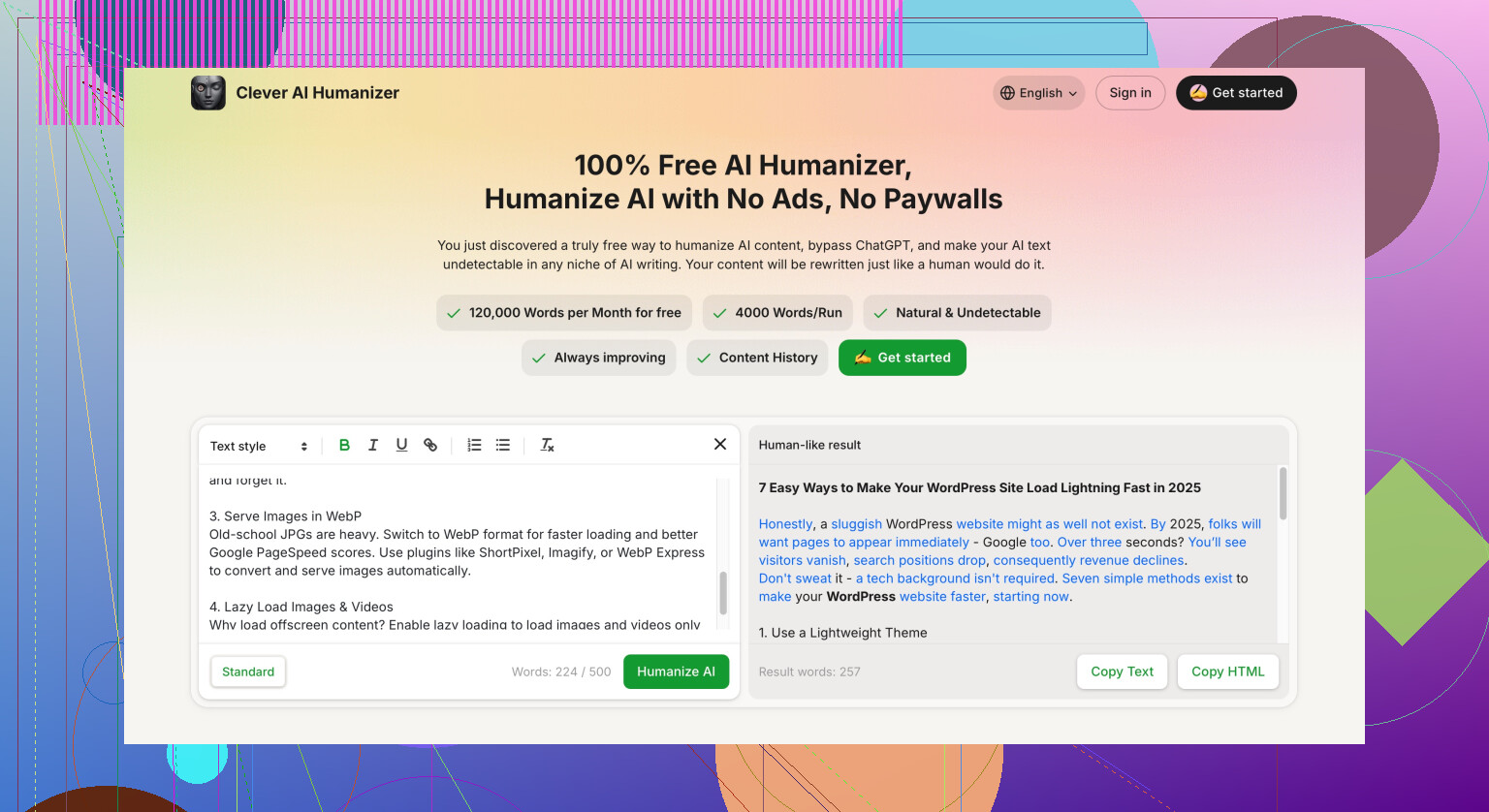Struggling to revise an essay that was written by AI and worried it sounds robotic. I’m not sure what to change or add to make it feel more natural and authentic. Any tips or methods to humanize AI writing so it connects better with readers?
Honestly, AI essays are like those frozen meals: technically food, but man, you know it’s not homemade. If you want your AI-generated essay to feel more ‘human,’ try tossing in a little imperfection—use contractions, toss out some figurative language, maybe even sneak in a rhetorical question or two. Personal anecdotes are gold. Don’t be afraid of emotion or a strong opinion. It’s okay to say, “I believe” or “in my experience.” Plus, break up the structure. AI loves neat little paragraphs—humans ramble sometimes or use unfinished sentences for effect. Synonyms/profanity (if it fits, lol), and avoid repeating phrases the AI tends to lean on (like “in conclusion”). Also, subtle errors (NOT outright mistakes)—conversational pauses, a random “uh,” or non-linear statements—can make it sound more like you.
If you want to shortcut the slog, try using something like the ‘Clever AI Humanizer.’ It’s actually made to help transform robotic text into something that passes as written by a real person. Check this out if you want a tool to save you a bunch of editing frustration: Make Your AI Essays Sound Natural.
TL;DR: Be messier, more opinionated, less perfect, and let a little of yourself (imperfections included) slip in between the lines.
Not gonna lie, I’m a little on the fence with the “sprinkle in a mistake and random ‘uhs’” advice from @hoshikuzu. Sure, a bit of imperfection helps, but it can look forced if you overdo it. If you’re after essays that read like a real person wrote them, you might wanna dig into why human writing feels different: we love transitions, subtle shifts in tone, and sometimes we just chase a weird idea for a paragraph or two before looping it back. AI essays? They’re obsessively tidy—every paragraph serves the main argument, and the logic is annoyingly tight.
So what I’d try (that isn’t just doing typos on purpose):
- Play with your sentence lengths! Humans do not write in identical chucks—so some long, rambling sentences and some short zingers totally break up that robot rhythm.
- Throw in a weird metaphor or allusion, even if it’s a stretch. “This theory is like socks in a dryer—some pieces always go missing.” No AI would naturally risk being that odd.
- Reference pop culture, recent news, or actual experiences.
- Use emotional language—“frustrates me,” “gets under my skin,” etc.
- Take a paragraph and purposely go on a mini-tangent. Like, not even related, but somehow loop it back.
Honestly, don’t sweat making it messier—make it riskier. AI plays it safe. Humans write things that are a little off or, honestly, occasionally dumb. Also, read it out loud—your ear will catch the moments that sound “off.”
Since you asked for tools, the Clever Ai Humanizer is actually solid for a baseline, but always scan for those leftover clunky lines. If you want more info about the different options out there, check out discovering the top free AI humanizer tools—there’s a decent breakdown.
TL;DR: Risk weirdness, not just mess. Read out loud. Break the rules on purpose. You’ll sound more alive than any frozen dinner AI essay.
Honestly, after combing through what @techchizkid and @hoshikuzu laid out, I’d say yes, spicing up an AI draft with quirks and going off-script helps, but sometimes too much “artificial messiness” feels, well, artificial. Both brought up decent points: break structure, risk weirdness, drop a tangent—these things can add flavor. But here’s where I’d take a bit of a detour: one of the biggest tells isn’t just tone, it’s audience engagement. AI essays rarely consider who’s reading. Humans, on the other hand, make little asides (‘if you’ve ever tried this yourself…’), play with reader expectations, and even occasionally hedge (“Maybe it’s just me?”).
Want to up the human vibe? Instead of only layering in random imperfection or meteors of pop culture, try crafting moments that pull in your reader. Address them directly, ask something you’d genuinely ask if you were chatting face to face, or even pose dilemmas that don’t resolve neatly. Uncertainty and complexity are human trademarks.
And real talk: tools like Clever Ai Humanizer are handy for a first-pass overhaul—super fast, catches stiff syntax, and bumps up natural flow. If that’s all you need because you’re in a hurry, props to it for convenience. But keep in mind, even the best tools sometimes flatten style, overcorrect, or miss out on the “soul” touches—like humor that flops if you’re not careful, or a weirdly generic idiom thrown in because it fit a machine logic instead of the essay’s vibe.
Pros of Clever Ai Humanizer:
- Fast batch editing
- Good for smoothing out robotic phrasing
- Decent at breaking up repetitive patterns
Cons:
- Tone might get a little too generic if you’re not careful
- Still needs your “finishing pass” for personality
Compared to what @techchizkid and @hoshikuzu outlined (lots of manual edits and going out on creative limbs), Clever Ai Humanizer offers a safer, quicker baseline—but you’ll still want to sprinkle in your unique flair after running the tool.
In sum: Talk to your reader, involve them, own your uncertainty, and don’t abdicate all the creative risks to algorithms or clever tools alone. That’s the real human touch.
